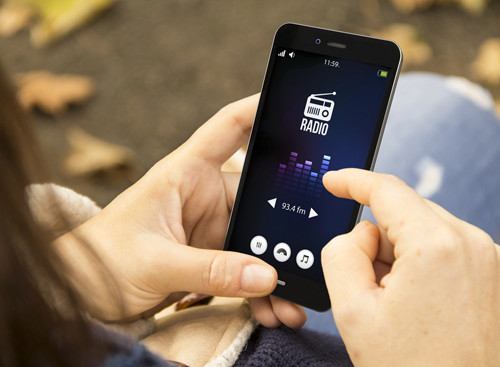According to the latest forecasts from Strategy Analytics, digital advertising will account for half of all spending on advertising in the UK this year for the first time, and the amount spent on marketing content designed for internet and mobile devices is expected to reach a record high of nearly £8bn.
The biggest growth area is in advertising on mobile phones, which has grown exponentially during the last 12 months. Spend is increasing at a faster rate than any other advertising format and the trend is being reflected in many of the biggest global markets. Mobile advertising in the UK is now more than radio and cinema advertising combined, and is rapidly approaching the scale of outdoor advertising.
Historically, there has been a large disparity between the amount of time spent on mobile phones versus the amount of ad money spent on the medium. While there is still a significant gap, the prolific use of digital devices is prompting a sea change in the way companies and consumers communicate and respond to advertising.
Understandably, many businesses and brands are keen to jump on the mobile ad bandwagon, and in the near future any medium that can be accessed via a device will be able to tap into this potentially lucrative revenue stream. The key is to harness the latest technology to make an impact on this platform, there are many best practice examples from social media to YouTube, however one medium that could reap significant benefits is radio.
Mobiles have had a dramatic impact on radio consumption. Statistically, online radio listening is increasing each year. The biggest percentage of listeners are the so called digital natives – the 12-24 years of age bracket who expect everything to be available through their mobiles. So it seems perfectly logical to marry the two together and use mobile advertising to target radio audiences. Now the radio programmes themselves have gone multimedia, radio advertising should be taking full advantage of the rapidly changing listening habits.
The potential for radio advertising revenues on mobiles can be demonstrated by looking at the trends in music streaming services. It is no coincidence that the biggest proportion of online radio listeners are those that tend to use the same devices for pure play services. The glaring difference is that the people who use brands such as Spotify, Pandora and Deezer are already responding to mobile advertising on these services.
Unlike radio, when the pure play listening figures rise, the mobile advertising revenue grows proportionately. This lies in the fact that pure play music providers know exactly who their ads are being delivered to, they can measure their messages and tailor them based on key details such as profile and geographical location. Digital users have become accustomed to this personalised and immediate advertising method. Audiences can act on the advertisements when they hear them, and it is a far more effective way of reaching the target market.
In radio, traditional spot advertising is usually devoid of any differentiation, so the online and mobile audience hear the same radio commercials as those people listening to the box radio receiver. There are a handful of stations who have already started airing different ads to their online listeners, however the adoption has been slow as it involves an expensive and time consuming process of installing and integrating servers and software to the playout systems.
Now technology has evolved and radio has the capability to provide advertisers with the same benefits as the other platforms through much simpler solutions that do not require this extensive integration. These ‘on-device’ solutions incorporate mechanisms that enable all of the interaction to be delivered and acted upon on from a mobile, and the technology works by targeting audio advertisements directly at individual mobile listeners in real-time. As we have seen on the other platforms, it can help broadcasters to build and boost revenue from their online and mobile audiences, and also improve listener engagement, interaction, targeting and measurement.
This cost effective technology also means less investment for the broadcaster, and it is client-side as opposed to server-based, which means ad insertion is carried out on the user’s mobile device instead of being done at the broadcaster’s server. This eliminates the potentially expensive equipment and integration effort, and provide a much more scalable, reliable and targetable solution.
Evidently, one of the reasons mobile advertising has become so successful is down to the targeted and personalised nature of the ads. Enter programmatic advertising, another growing trend for 2015 that is being embraced by publishers and brands to enable audience addressable advertising. In simple terms, programmatic advertising through ‘ad exchanges’ brings the ability to buy and sell advertising in an automated fashion in real-time, one ad impression at a time. Not only does it provide better targeting, which means improved ad relevancy, there are also significant cost efficiencies generated by outsourcing most of the heavy lifting to computer algorithms and reducing the dependency on expensive radio media buying and sales teams.
A further benefit of digital audio advertising is its effectiveness at breaking through the clutter of display advertising. Despite the dramatic increase in digital media spend across the board, the standard digital banner ads actually show lower clickthrough rates, and a recent study by Google reported that many (56.1 per cent) are never even seen by a human. Competing in this crowded space needs a more strategic approach and the integration of more sophisticated technology tied to a radio broadcast will allow advertisers and stations to optimise their campaigns and drive attention direct to the digital display ads.
Historically, the radio industry has been one of the great ad innovators, engaging with its audience and delivering perfectly executed spot advertising to listeners for decades. In this new digital era, it is time for change. The technology is now in place to take radio advertising into the future, the listeners are on the mobile, and the targeted advertisements should be too.






